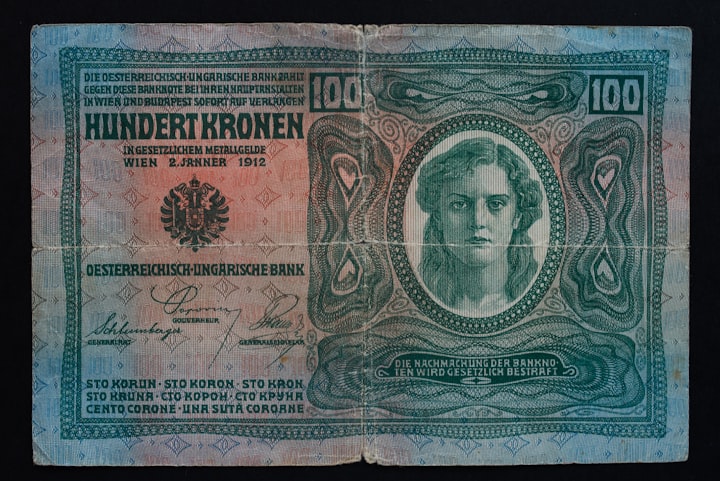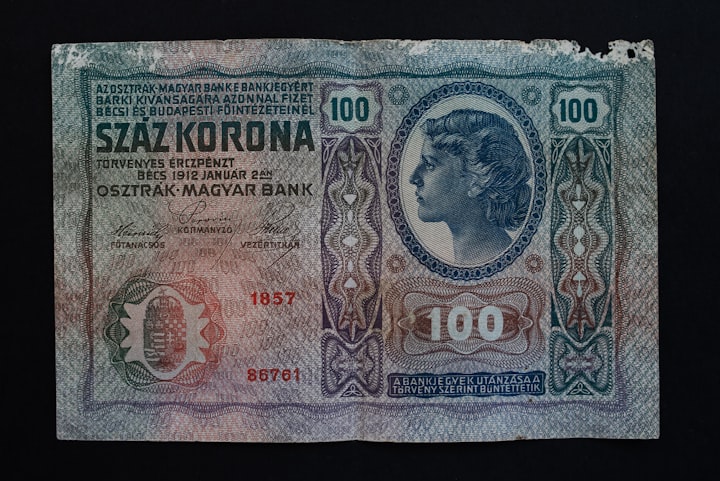Money Through the Ages.
The History of Money

Here I have tried to pick out interesting events in the history of money that help to form a picture of how we got to where we are now.
9,000 BCE: Cattle—Commodity Money
The earliest forms of commodity money were livestock, particularly cattle, and plant products such as grain. Cattle have been used as commodity money from c.9,000 BCE. As such, the cow is probably the most enduring, if not successful, form of money. They are still used today in some parts of the world. For example, in March 2018, 100 cattle stolen in Kenya were believed to be used for paying a dowry25.
Would a cow pass the three ‘is it money’ questions that economists like to use? History tells us that cows are a medium of exchange, so it ticks that box. You would assume that if it is used for buying and selling things, people might have some sort of idea of the price of other objects in cows. If so, that would make a cow a decent unit of account.
But is it a store of value? Hmm, there are some complexities—the price of cows varies by breed and age and individuals can drop dead. On the other hand, cows have a kind of interest rate, in that they are able to reproduce. So, while any single cow may not be a very good store of value, a herd arguably is. Monetary economists enjoy arguing about things like this.
3,000 BCE: Banks
Between about 3,000 and 2,000 BCE, banks were created in Babylon, Mesopotamia, the land now roughly equating to Iraq, Kuwait, and Syria. Banks evolved from the warehouses that were places for the safekeeping of commodities such as grain, cattle, and precious metals.
2,200 BCE: Lumps of Silver
Around 2,250-2,150 BCE silver ingots were standardised and guaranteed by the state in Cappadocia (in present day Turkey), and this helped their acceptance as money. Silver was the ‘gold standard’ of precious metal money. This notes an interesting shift from using commodities that clearly have an intrinsic value (cattle and grain that you can eat) to commodities that have an extrinsic value because of their scarcity and durability. During this shift, you can imagine people then having the same arguments as we do today with Bitcoin. ‘Yes, but silver doesn’t have intrinsic value—I can’t feed my family with it’. At the next dinner party if ‘intrinsic value’ is brought up, you can say ‘Come on guys, we’ve been having this argument since 2,200 BCE…’
1,800 BCE: Regulation!
If you want to blame someone for regulation, blame Hammurabi, sixth King of Babylon, who reigned between 1792 and 1,750 BCE and developed the Code of Hammurabi. This set of laws was once considered the earliest written legislation in human history, and the 282 case laws include economic provisions (prices, tariffs, trade, and commerce), family law (marriage and divorce), as well as criminal law (assault, theft), and civil law (slavery, debt). It included the very first laws for banking operations.
Just think—those libertarians who proclaim that regulation is unnecessary, but then demand that something must be done when they lose money in cryptocurrency scams, are just discovering the value of regulations that have existed ever since laws were first written down!
1,200 BCE: Shell Money
In 1,200 BCE, cowry shells were used as money in China. Cowries are sea snails, most commonly found on the shores of the Indian Ocean and the waters of Southeast Asia. Wikipedia describes cowries as:
a group of small to large sea snails, marine gastropod molluscs in the family Cypraeidae, the cowries. The word cowry is also often used to refer only to the shells of these snails, which overall are often shaped more or less like an egg, except that they are rather flat on the underside.
According to the World Register of Marine Species28 (WORMS), the zoological name for cowries is Monetaria Moneta (Linnaeus, 1758). This sea snail is so ‘money’ the scientists named it ‘money money!’
In fact, the Chinese named these creatures as ‘money’ well before the West did—the radical 貝(贝 in simplified Chinese and pronounced bèi),
means shell or currency, and it even looks like one of the cowries. Chinese words and characters related to money, property, or wealth often use this radical.
As with cattle, the practice of using cowry shells as money survived until as recently as the 1950s in parts of Africa.
700-600 BCE: Mixed Metal Coins
In 640-630 BCE, we see the earliest examples of coins in Lydia (now Turkey), which was a trading hub with large gold supplies. The first coins were made of a naturally occurring mixture of gold and silver called electrum. It is no coincidence that one of the earliest popular Bitcoin wallets, created in 2011 by Thomas Voegtlin, is also called Electrum30!
According to the British Museum, these coins were not consistently round, but were created to various standard weights. It is thought that the coins were weighed rather than counted for many transactions.
600-300 BCE: Round Coins
The first round coins emerged in China, made of base (non-precious) metals. These were still commodity money, so their value was the value of the metal, which was low. Their low value meant that the coins were useful for daily transactions.
c. 550 BCE: Pure Precious Metal Coins
Lydia, which must have been the Silicon Valley of the Iron Age world, continued to innovate, producing separate silver and gold coins, and usage of these started to spread. I suppose this is one of the earliest examples of ‘FinTech’ (financial technology): using technology to invent new financial instruments. Next time a banker effuses that they are pioneers of FinTech, you can tell them that Lydians got there first in 550 BCE!
According to Amelia Dowler, curator at the British Museum,
Silver was more widely available than gold and with a lower value could be used for smaller transactions and was therefore better in the marketplace. So, it was silver coinage which gained rapidly in popularity and, during the sixth century BC, mints opened in Greek cities across the Mediterranean.
Source: bbc.co.uk32
405 BCE: First Example of Gresham’s Law
In 405 BCE, Aristophanes’ famous political satire The Frogs was produced. It tells of the adventures of Dionysus and his slave in their quest to bring witty poet Euripides back from the underworld to Athens, which had become boring. The play contains the first known example of Gresham’s Law, that bad money drives out good. What this means is that you’d rather hold on to good/more valuable money and spend the bad/less valuable money if others will accept it. So if you have the choice between spending a pure gold coin or a debased gold coin (with other base metals mixed in), and they both have the same face value, then you will of course spend the debased one, and the good money disappears from circulation.
Here is the Chorus lamenting that they now use new ugly copper coins instead of old gold coins—and with a bit of anti-immigrant sentiment thrown in for good measure:
The freedom of the city has often appeared to us to be similarly circumstanced with regard to the good and honourable citizens, as to the old coin and the new gold. For neither do we employ these at all, which are not adulterated, but the most excellent, as it appears, of all coins, and alone correctly struck, and proved by ringing every where, both among the Greeks and the barbarians, but this vile copper coin, struck but yesterday and lately with the vilest stamp; and we insult those of the citizens whom we know to be well-born, and discreet, and just, and good, and honourable men, and who have been trained in palæstras, and choruses, and music; while we use for every purpose the brazen, foreigners, and slaves, rascals, and sprung from rascals, who are the latest come; whom the city before this would not heedlessly and readily have used even as scape-goats.






Comments
There are no comments for this story
Be the first to respond and start the conversation.